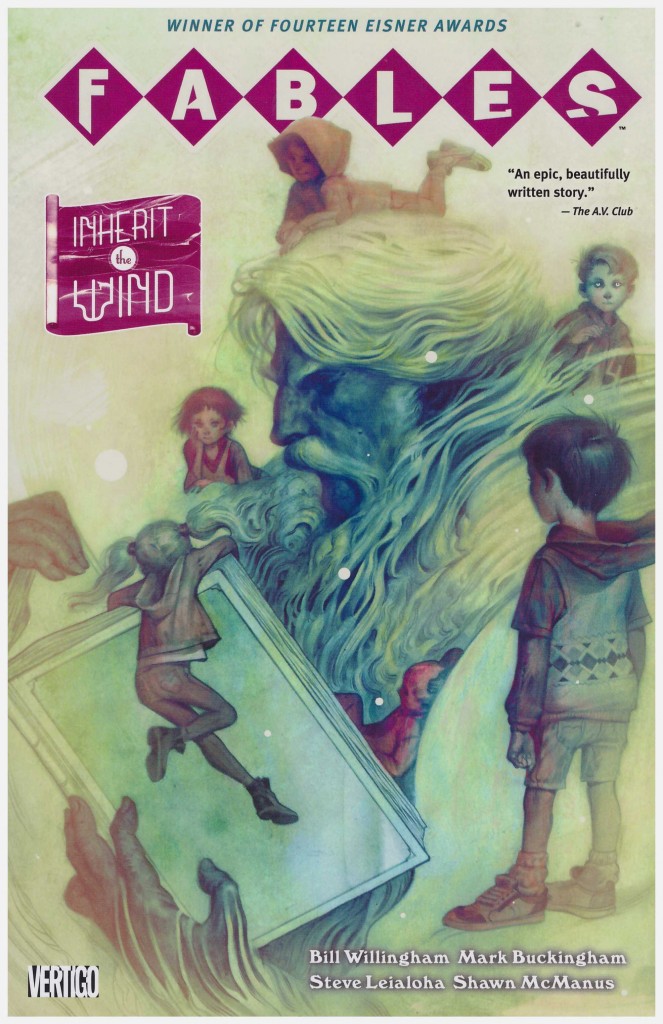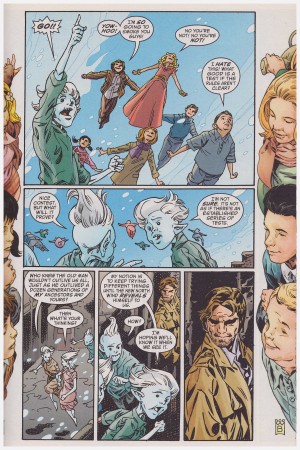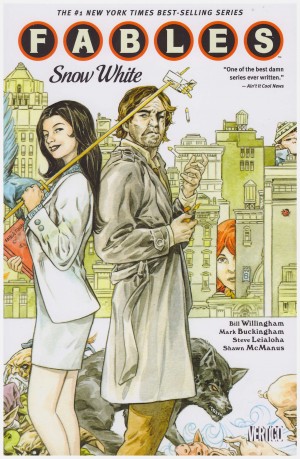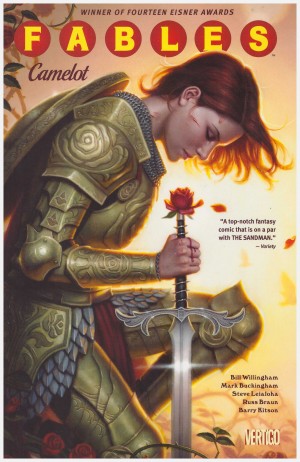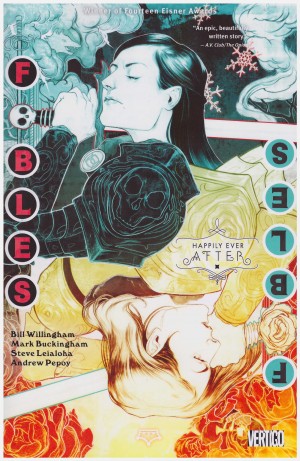Review by Frank Plowright
Until this point six of Bigby and Snow White’s seven children have been very much a group gestalt, the bunch of kids playing about with one another, and the seventh has been the subject of much contention. Events of Super Team, however, resulted in a vacancy for an extremely powerful position, and much of Inherit the Wind concerns which of the children will fill that slot. Matters are complicated by Ozma, a rather more openly manipulative witch than her predecessor heading the cabal, who chances across the most timid of the children, Ambrose, and relates a prophecy about their various fates. Several of these occur over the next volumes.
It’s an interesting change of pace, as much of Fables has been concerned with major conflicts or leading up to and plotting for them, and there’s comparatively little of that here with the main thrust being the education and selection process. Over the course of the training programme we come to realise exactly how powerful these children are, and their differing character traits.
This constantly intriguing thread is inter-weaved with two others. The first concerns Bufkin and his new found companions setting across the Oz-like world to ferment revolution. Bufkin blunders into situations buffered by confidence, then blusters his way through them, but that’s not always possible, and by his final appearance in this book matters are looking grim indeed. The other recurring thread is the continuing transformation of the former Nurse Spratt, now greatly empowered.
These are all pencilled by Mark Buckingham, apart from one section where he just provides layouts for Andrew Pepoy. He’s now so confident with the pencils that had the credits not specified the work division most would be hard pressed to notice the difference. Buckingham also draws the second Fables Christmas story. It focuses on what Rose Red must become, and while there’s charm and elegance, it’s beginning to seem as if Bill Willingham has rather missed the boat with a plot that’s inconsequential and saccharine. It then takes a left turn into a complete punch to the stomach and from that point ascends to conversations with ghosts, before rather cleverly presaging the next volume, Cubs in Toyland.
The final section is four shorter stories by guest artists taking a glimpse at Fables in the days before departing their homelands. We have Adam Hughes in Mucha mode revisiting the whimsical porcupine from an earlier volume, P. Craig Russell in startling form with a rather abstruse tale of royal infidelity, followed up by Ramón Bachs’ depiction of a fisherman and his son. The longest of the stories by the team of Zander Cannon and Jim Fern is the least distinguished artistically, but one of those gems that Willingham occasionally pulls out of left field. In ten pages it introduces the powerful magician Kadabra and follows him from that point until his death, yet what he accomplished, and completely forgot, is magnificent.
Shawn McManus is credited on the covers of the first print, but his art doesn’t feature internally. These stories are also found in the bulky paperback Fables Compendium Three, or in the hardcover Fables Deluxe Edition Book 12.
